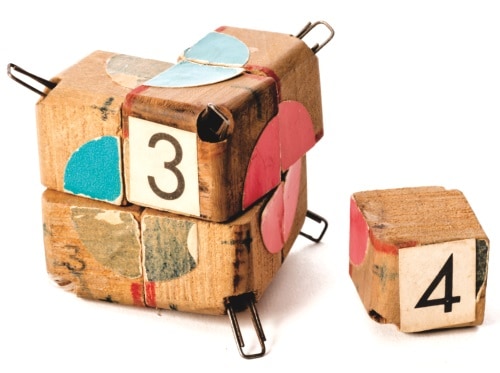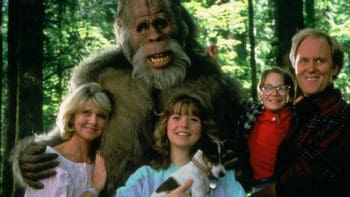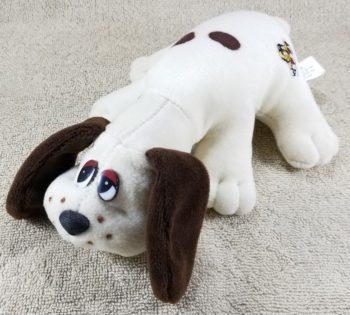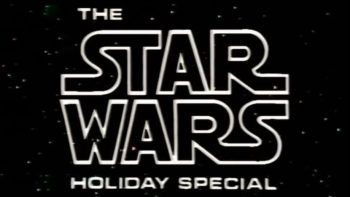
What do you do when you’ve got one of the hottest toys of all time and not sure what to do with it? You make a cartoon show of course.
Rubik, The Amazing Cube was an animated show that debuted on ABC on September 10, 1983. It told the story of Rubik, a Rubiks Cube come to life who befriends some children while trying to avoid an evil magician. It would be a short-lived series only lasting 13 episodes.
This is a bit of an obscure one and I think the average person who grew up in the 80s might not even remember it. Rubik, The Amazing Cube did have a pretty decent niche following but debuted in the early 80s and didn’t have a long run.
The ’80s was a time when there was an explosion of content and programming so it was hard to stand out among the big juggernauts like G.I. Joe and the Transformers but it was worth a shot. Rubik, The Amazing Cube started as a combo show with Pac-Man but then would become its own standalone show a few years later.
It’s hard to build an audience that way but this is a look back on an obscure show but one that was a bit ahead of its time and may have paved the way for more Spanish-based programming like Dora the Explorer.
Let’s take a look at a cartoon that was actually based on a Rubix Cube: Rubik, The Amazing Cube.
The History Of The Rubiks Cube

Just in case you’ve been living in a bio-dome for 50 years, the Rubiks Cube was created by Erno Rubik who was a Hungarian inventor, architect, and professor. He has been a long champion for science in education which he continued long after the success of his famous cube.
Rubik was a professor of architecture at the Budapest College of Applied arts from 1971 to 1979 and he would come up with designs for various three-dimensional puzzles. During this time he came up with a prototype for the Rubiks Cube that was designed as a task for his students to work on.
The patent for it was put through in 1975 and the focus for the cube was to help students become more aware of all the possibilities of space alteration of objects with the intent to change their thinking when it came to architecture.
The first cube started with blocks of wood and rubber bands and was meant for his students to use to create different designs without the whole thing falling apart. The students loved it and since it was such a simple structure, Rubik wondered if it could be something that could be mass-produced for others.
The first commercial version was made in Hungary and was called the “Magic Cube” before it was licensed to American toy company “Ideal Toys”. They would rebrand it to the “Rubiks Cube” and release it to the public in 1980. I never had realized the Rubiks Cube was an 80s item as I had always thought it went back to the 60s. The more you know…
The process from prototype to mass production had taken 6 years but you obviously know what a Rubiks Cube is showing the worldwide success it had. And this success happened almost immediately. It won several toy of the year awards – for three straight years – and, to date, has sold around 350 million units making it one of the most successful toys of all time.
And that leads us to a cartoon show.
How The Rubiks Cube Led To A Cartoon Show
I was unaware that this cartoon came out early in 1983 but it’s all making more sense now if you realize that the Rubiks Cube was an 80s product and would have been hitting its stride by 1982. This would, of course, lend itself to more branding no matter how ridiculous it might seem as you have to strike while the iron was hot.
I was only 5 years old or so at the time so I wouldn’t have been the prime target for the Rubiks Cube and don’t remember any of the hoopla going into the cartoon show. You may be a bit older and remember this, but it was clearly a phenomenon in the early 80s.
If you think of all the ridiculous things that have been turned into cartoon shows over the years, this does make total sense. The cartoon show would be produced by Ruby-Spears Enterprises made up of Joe Ruby and Ken Spears who had previously been sound editors at Hanna-Barbera. Eventually while working there they were tasked with coming up with a mystery-based cartoon series for Saturday mornings – and they came up with a pretty good idea in 1969:
It was called Scooby Doo: Where Are You?…
They would branch out in 1977 to create their own production company and over the years it would bring us things like:
- Fang face
- Thundarr the Barbarian
- Alvin and the Chipmunks
- The Sectaurs
- Mister T.
- The Police Academy animated series
- Mega Man
- The Centurions
In the early 80s, they needed to capitalize on a few growing fads – specifically, the Pac-Man video game and the Rubiks Cube and this led to them developing the Pac-Man/Rubik, The Amazing Cube Hour. This was a combo show which was a one-hour block aired on ABC starting on September 10, 1983.
The Premise Of Rubik, The Amazing Cube
Like most cartoon shows from the 80s, you just had to watch the intro theme song, and you were immediately up to speed with the whole show. was important for shows to include this as it led to a low barrier of entry and an unfamiliar viewer could jump in at any point and know exactly what was happening. It could help in avoiding having to worry about story arcs or specific character development, you could just jump right in.
With Rubik, you just have to get on board with its premise. Rubik falls out of the stagecoach of an evil magician (not the one from Frosty) and ends up connecting with kids Carlos, Lisa, and Reynaldo Rodriguez.
Their goal is to keep Rubik away from the evil magician who will no doubt use him for evil purposes – whatever evil can be done with a Rubiks Cube, anyway. This magician issue is the main cornerstone of the show, but there are other episodes that deal with regular situations involving the kids.
Rubik Himself
It’s hard to characterize Rubik as he seems like part superhero and part alien. He could probably join the Avengers if he really pushed it and has a lot of amazing abilities including:
- Telekinesis
- Changing size
- Changing the size of objects
- Changing people into animals
- Shape-shifting
- Teleportation
- Time travel
These are just a few, honestly, it’s like if Doctor Strange and Orko from He-Man had a baby. He’s actually designed a bit more on a Smurf as they were super hot at the time and without knowing how in the hell you make a Rubiks Cube sentient, they went with that style.
There is also nothing known about Rubik’s origin or his age, but he loves junk food, Saturday morning cartoons, and roller coasters – he’s basically me in cube form. They also borrowed a lot from Scooby Doo and the shows would be based around Rubik and the kids foiling some crime.
Rubik also couldn’t use his magical Yoda powers unless he was “solved” or had all his colors lined up properly. If he got even slightly out of alignment, he would lose his powers and Carlos would have to act quickly to solve him to restore his powers.
How Did This Show Do?
Rubik, The Amazing Cube debuted on September 10, 1983, and would only last 13 episodes. It had a lot of hype built up around it as each year there would be a Saturday morning preview special showing you the upcoming shows for that year – and this event was HYPE.
That year’s preview was hosted midweek by Dick Clark of all people and got kids pretty excited for a combo show of Pac-Man and a Rubix Cube. But by December 1983 it was over. It then – surprisingly – returned a few years later airing as a standalone show, sans Pac-Man.
That re-run season would go from May 4 to August 31, 1985. I’m not sure if it had built up a little audience, or they were giving it one last kick at the can, but that re-run season was as far as the show would go.
What is interesting is some of the voice talents they were able to recruit for it. The first is, of course, Rubik himself who was voiced by Ron Palillo aka Horshack from Welcome Back, Kotter. To achieve the bizarre voice of Rubik, they had Palillo speak very slowly and then speed up the track and raise the pitch.
Other notable voices include Michael Saucedo who starred on St. Elsewhere and Michael Bell who provides the voice of Reynaldo. It’s worth taking a second to look at Michael Bell because if you watched pretty much anything in the 80s and 90s, there was a good chance he did a voice on it. Here are just a few samples:
- Riddler on the Super Friends
- Doctor Octopus on Spider-Man and His Amazing Friends
- Grouchy Smurf, Lazy Smurf, and Handy Smurf on the Smurfs
- Prowl, Scrapper, Sideswipe, Bombshell, First Aid, and Swoop on Transformers and Transformers: The Movie
- Duke, Xamot, and Blowtorch on G.I. Joe
- Lance and Sven on Voltron
- Bruce Banner on The Incredible Hulk cartoon
- Darkwing Duck
- Duck Tales
- Scooby Doo
- Garfield and Friends
- Mister T.
- My Little Pony
I’ll stop there because it goes on forever, not to mention that he’s been in every video game you’ve probably ever played. Seriously, just look this guy up.
The Impact Of Rubik, The Amazing Cube
So this show was relatively groundbreaking as there was not a lot of Hispanic and Spanish-based entertainment out there – especially in cartoons. That’s still a bit of the case today but in 1983 it was a pretty big deal to have a show take this approach.
Even though it was short-lived, a show like this was able to pave the way for future shows like Dora The Explorer. Rubik, The Amazing Cube was able to portray Hispanic kids doing everyday things and never went the cheap route that cartoons have often done with Spanish speaking characters.
Even the theme song kept with the Hispanic flavor of the show and was actually performed by Peurto Rican boy band Menudo! Sadly, Ricky Martin was not with them at this time…
Final Thoughts
So there you have it, a pretty obscure show that not only was striking at the height of popularity for a toy but was able to take a different direction than other run-of-the-mill cartoons. Rubik, The Amazing Cube was not required watching for me when I was a kid as I barely remember it.
It may be one of those shows that triggers a memory for you, or you may be just hearing about it for the first time. This was an age where you had to throw everything at the wall and see what stuck. If something was hot, you had to jump on it and see what kind of lifespan you could get out of it.
When it comes to a Rubiks Cube, I’m not sure how much life you can get out of this idea, and I think their hope was that they would somehow create a second Smurf-like craze. Clearly, this didn’t happen, but it remains an interesting part of the early 80s cartoon landscape.



